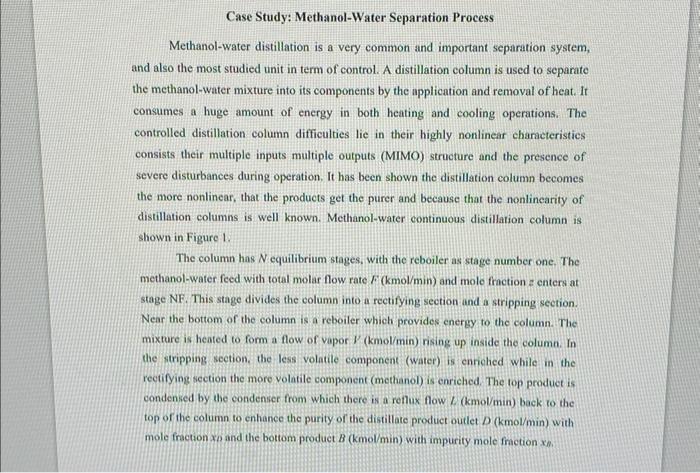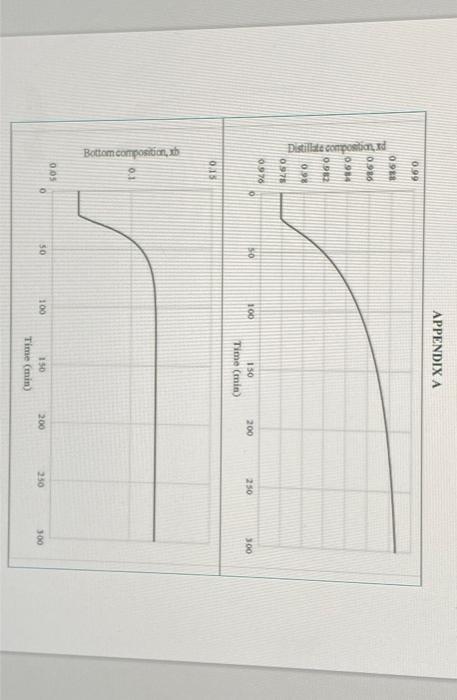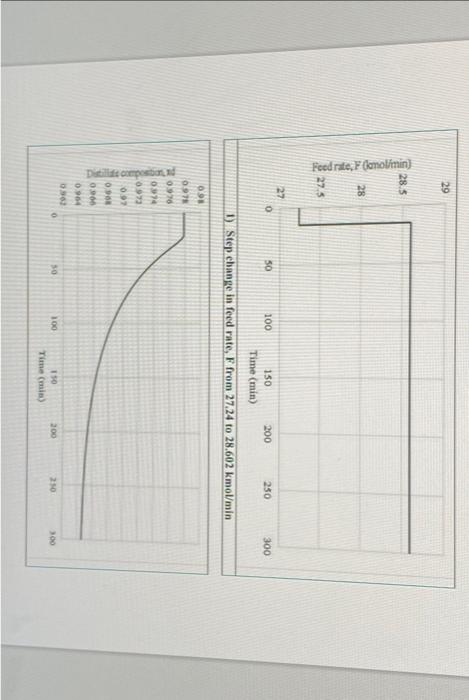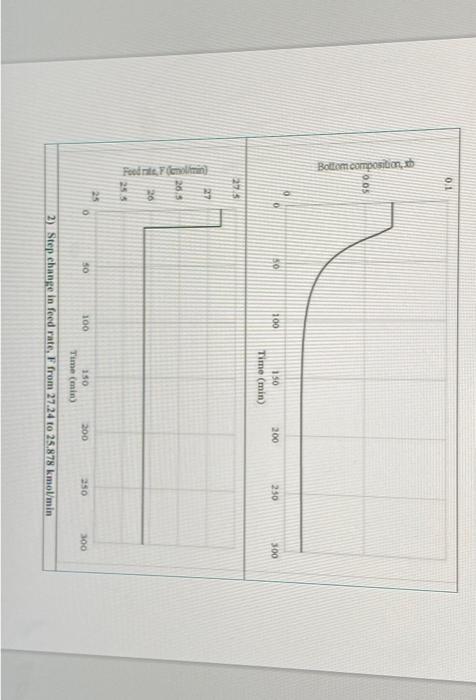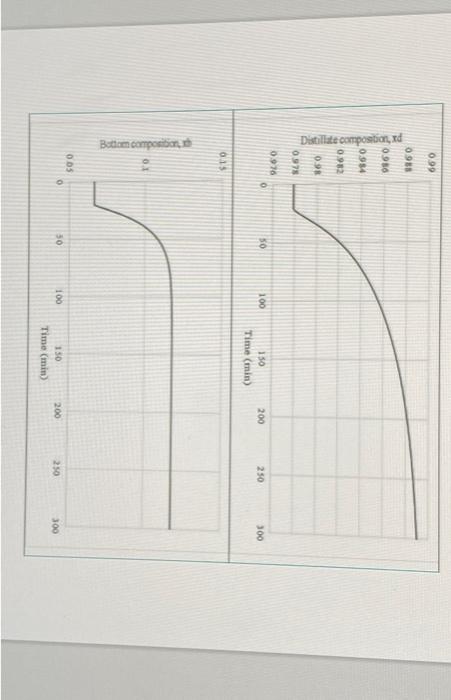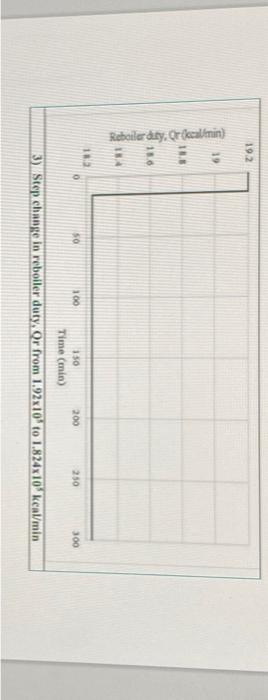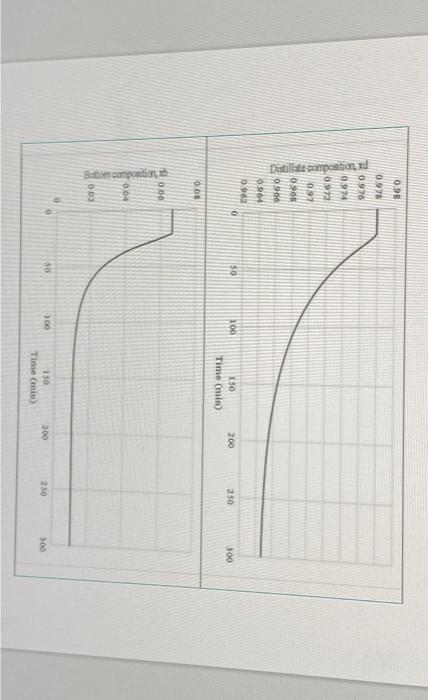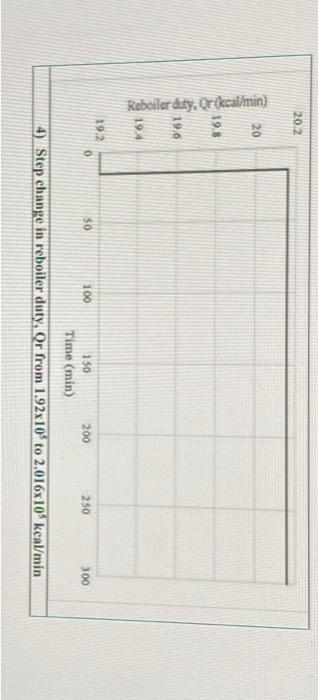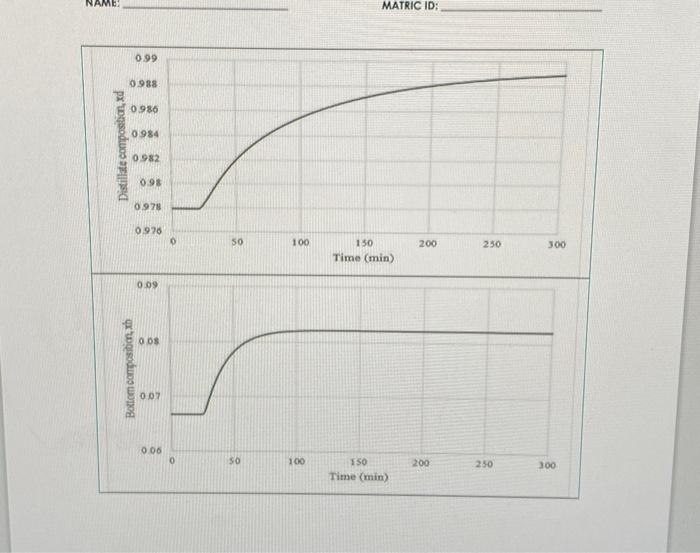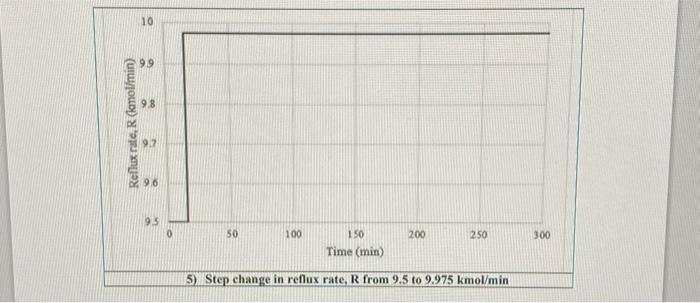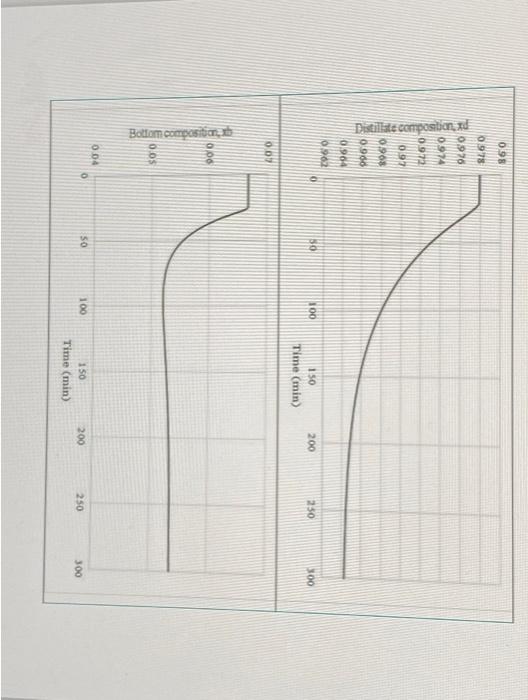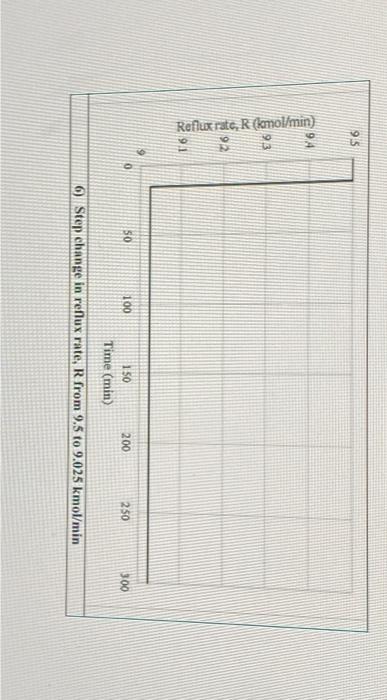Part I: Feedback Control System Design (a) Construct block diagrams of the methanol composition at the distillate and bottom of the column control system. Manipulate the reflux flow for distillate composition and bottom flow for bottom composition. (b) State your values assumption for the following transfer functions: 1. GM 2. Gv 3. Input step change *Remarks: You can choose your own value except negative values or 0 . (c) Determine transfer function in the forms of first order plus time delay model based on step input data in Appendix A. (d) Determine controller parameters for 1. P control 2. PI control 3. PID control (e) Simulate the developed models using Simulink and discuss all of the simulation results. Part II: Alternative Control System Design (a) Propose combined feedforward-feedback control system design. (b) Simulate combined feedforward-feedback control using Simulink and discuss all of the simulation results. (c) Propose cascade control system design. (d) Simulate cascade control using Simulink and discuss all of the simulation results. (c) Compare all of your simulation results in Part I and Part II. Summarize your findings. (f) State your values assumption for any required transfer functions and step change. "Remarks: You can choose your own value except negative values or 0 . Methanol-water distillation is a very common and important separation system, and also the most studied unit in term of control. A distillation column is used to separate the methanol-water mixture into its components by the application and removal of heat. It consumes a huge amount of energy in both heating and cooling operations. The controlled distillation column difficulties lie in their highly nonlinear chanacteristies consists their multiple inputs multiple outputs (MIMO) structure and the presence of severe disturbances during operation. It has been shown the distillation column becomes the more nonlinear, that the products get the purer and because that the nonlinearity of distillation columns is well known. Methanol-water continuous distillation column is shown in Figure 1. The column has N equilibrium stages, with the reboiler as stage number one. The methanol-water feed with total molar flow rate F(kmol/min) and mole fraction z enters at stage NF. This stage divides the column into a rectifying section and a stripping section. Near the bottom of the column is a reboiler which provides energy to the column. The mixture is heated to form a flow of vapor V(kmol/min) rising up inside the column. In the stripping section. the less volntile component (water) is enriched while in the rectifying section the more volatile component (methanol) is enriched. The top produet is condenked by the condenser from which there is a renlux flow (kmol/min) back to the top of the column to enhance the purity of the distillate product outlet D(kmol/min) with mole fraction xD and the bottom product B(kmol/min) with impurity mole fraction xm. APPENDIX A MATRIC ID


